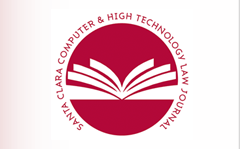Home > Journals > High Tech > Vol. 40 (2024) > Iss. 1 (2024)
Abstract
The “work of authorship” lies at the heart of the Copyright Act of 1976. It is what copyright protects. Central though the concept is, the Act never defines what a work of authorship might be. According to the Act, it can be perceived in tangible fixations, but is distinct from the fixations. The Act also provides examples: writings, drawings, computer programs, but never describes how these might be distinguished from their fixations. Unlike the Patent Act, where “metes and bounds” of a patentable invention are defined by a patent’s claims, the Copyright Act provides no guidance as to what the “metes and bounds” of a copyright work of authorship might be.
Most copyright practitioners and commentators are so inured to the concept that they never pause to consider what the “work of authorship” is, and what it means to say that it exists independently of its fixations. This paper addresses these questions. It will consider when and how the copyright concept of an incorporeal “work of authorship” (which for brevity I will call the copyright Work) arose in federal US law. The paper will compare the concept to Platonic forms, outline the forces that supported its creation, and conclude that the concept is a manifestation of cultural and technological developments in the Nineteenth and Twentieth Centuries that required the range of copyright infringement to expand. The paper will then address the question of how the copyright Work might be defined, concluding that it is not distinct from its fixations, but is instead a set of fixations, defined by the rules of copyright infringement.Building on this definition, the paper then considers whether cultural and technological developments in the current Century, including social media, streaming, open-source licensing, and, most recently, generative artificial intelligence, will shrink the range of copyright infringement, and as a result, diminish the size of the set comprising the copyright Work. Finally, the paper will extrapolate from these copyright developments to suggest some more general conclusions about the nature of law as something that cannot be separated from a particularculture, technology, and time.
Recommended Citation
Hemnes, Thomas,
THE COPYRIGHT WORK OF AUTHORSHIP,
40 Santa Clara High Tech. L.J. 35
(2024).
Available at: https://digitalcommons.law.scu.edu/chtlj/vol40/iss1/2
